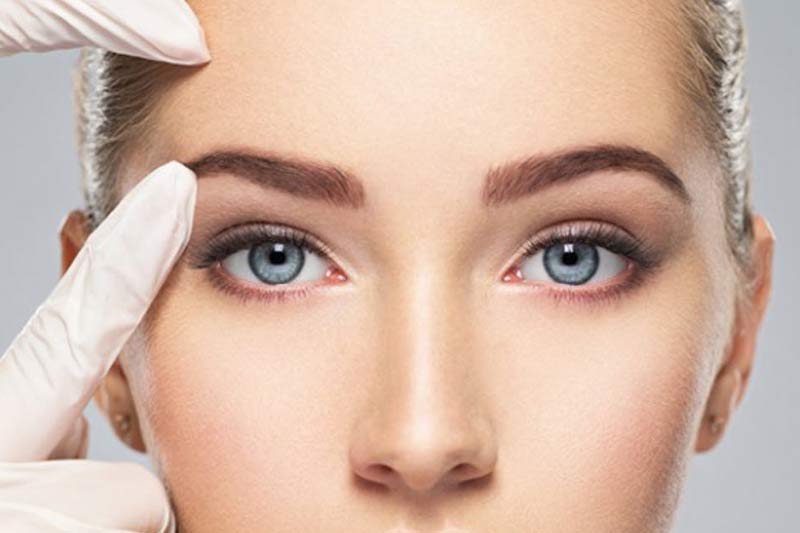Dermal fillers and facial filler injections have revolutionized the world of aesthetic treatments, offering a non-invasive way to restore youthful contours, smooth out wrinkles, and enhance facial features. These treatments are increasingly popular as they provide immediate results with minimal downtime. In this comprehensive guide, we will explore what Dermal Fillers Injections in Dubai are, how they work, the different types available, and address frequently asked questions to give you a thorough understanding of these facial treatments.
What Are Dermal Fillers?
Dermal fillers are injectable substances used to add volume and smooth out the skin. They are designed to treat a variety of aesthetic concerns, including fine lines, wrinkles, hollows, and sagging skin. These fillers are commonly injected into areas like the cheeks, lips, under the eyes, and nasolabial folds (the lines running from the nose to the corners of the mouth).
The primary purpose of dermal fillers is to restore volume and structure to the face, which tends to diminish as we age. Over time, the skin loses collagen, elastin, and hyaluronic acid—key components responsible for keeping the skin firm and youthful. Dermal fillers counteract these age-related changes by replenishing volume and encouraging collagen production.
How Do Dermal Fillers Work?
Dermal fillers work by injecting a gel-like substance under the skin to restore volume, reduce wrinkles, and smooth out areas of the face. The injected filler creates a cushioning effect, plumping the skin and filling in the areas where volume has been lost.
Types of Dermal Fillers
Several types of dermal fillers are available, each with unique properties and uses. These include:
- Hyaluronic Acid Fillers
Hyaluronic acid (HA) is a naturally occurring substance in the body that helps retain moisture and provides volume. HA fillers, such as Juvederm, Restylane, and Belotero, are among the most commonly used dermal fillers. They are excellent for treating fine lines, wrinkles, and facial volume loss, and the results typically last 6 to 12 months. - Calcium Hydroxylapatite Fillers
Calcium hydroxylapatite (CaHA) is a mineral-like compound found in human bones. Fillers like Radiesse use CaHA to add volume and stimulate collagen production. This type of filler is often used for deeper lines and areas that need more substantial volume restoration. Results can last 12 to 18 months. - Poly-L-Lactic Acid Fillers
Polylactic acid (PLLA) stimulates collagen production in the skin. Sculptra is a popular PLLA-based filler that gradually restores volume by encouraging the skin to produce collagen. Results may not be immediate, but they last up to 2 years, making it ideal for patients looking for longer-term results. - Autologous Fat Injections
Fat injections involve harvesting fat from one part of the body (such as the abdomen or thighs) and injecting it into areas of the face that need volume restoration. While the results are more permanent compared to synthetic fillers, fat injections are more invasive and involve a longer recovery process. - Polymethylmethacrylate (PMMA) Fillers
PMMA is a synthetic substance used in fillers like Bellafill. It is considered a semi-permanent filler because it lasts longer than hyaluronic acid-based fillers. PMMA fillers are often used for deep wrinkles, facial volume loss, and acne scars.
Areas Treated with Dermal Fillers
Dermal fillers can be used to address various facial concerns, including:
- Wrinkle and Fine Line Reduction: Fillers are often used to smooth out wrinkles around the eyes (crow’s feet), mouth (smile lines), and forehead (frown lines).
- Lip Augmentation: Fillers can enhance lip volume and shape, creating fuller and more defined lips.
- Cheek Enhancement: Loss of volume in the cheeks can result in a sunken, tired appearance. Fillers can lift and add volume to the cheekbones.
- Under-Eye Hollows: Fillers can address dark circles or hollows under the eyes, providing a more rested and youthful look.
- Chin and Jawline Contouring: Dermal fillers can be used to reshape the chin and jawline for more balanced facial features.
Procedure: What to Expect
The dermal filler procedure is generally quick and minimally invasive. Here’s what you can expect during the treatment:
- Consultation: Your treatment begins with a consultation with a licensed healthcare provider or aesthetician. During this consultation, the practitioner will assess your facial structure, discuss your concerns, and determine the best filler for your needs.
- Preparation: On the day of the procedure, the targeted area is cleaned and, in most cases, a topical anesthetic is applied to numb the area. Some dermal fillers also contain lidocaine, a numbing agent, to minimize discomfort during the injection process.
- Injection: The filler is injected into the targeted area using a fine needle or cannula. The process typically takes about 15 to 30 minutes, depending on the number of areas being treated.
- Post-Treatment Care: After the treatment, you may experience mild swelling, redness, or bruising, which should subside within a few days. There is generally no downtime, and most people can return to their daily activities immediately.
Benefits of Dermal Fillers
Dermal fillers offer several advantages for individuals seeking non-surgical cosmetic improvements:
- Non-Invasive: Unlike surgical procedures such as facelifts, dermal fillers are non-invasive and require no cutting or stitches.
- Minimal Downtime: Most people experience little to no downtime after the procedure. Swelling or bruising is usually mild and resolves quickly.
- Immediate Results: The results of dermal fillers are visible immediately after the treatment, though some fillers may take a few days to fully settle.
- Customizable: Dermal fillers can be tailored to each patient’s needs. Whether you want subtle improvements or more dramatic changes, your provider can adjust the treatment accordingly.
- Long-Lasting: While results vary depending on the type of filler, many dermal fillers last for several months to a year, and some even stimulate long-term collagen production.
Risks and Side Effects
Although dermal fillers are generally safe, they do come with potential risks and side effects:
- Swelling and Bruising: It’s common to experience swelling and bruising at the injection site, though these effects usually subside within a few days.
- Allergic Reactions: Although rare, some individuals may experience allergic reactions to certain filler ingredients.
- Infection: As with any injection, there’s a risk of infection. Choosing a qualified and experienced practitioner can minimize this risk.
- Asymmetry or Uneven Results: In some cases, the results may not be symmetrical. This can usually be corrected with follow-up treatments.
Frequently Asked Questions (FAQs)
1. How long do dermal fillers last?
The longevity of dermal fillers depends on the type of filler used and the area treated. Generally, results can last anywhere from 6 months to 2 years. Hyaluronic acid fillers typically last 6 to 12 months, while more permanent options like fat injections may last longer.
2. Are dermal fillers painful?
Most patients report minimal discomfort during the procedure. A topical numbing cream is usually applied before the injection, and many dermal fillers contain lidocaine, a local anesthetic, to further reduce pain.
3. Can dermal fillers be reversed?
In most cases, dermal fillers can be reversed, especially hyaluronic acid-based fillers. If you’re unhappy with the results, an enzyme called hyaluronidase can be injected to dissolve the filler.
4. Are there any side effects or risks?
The most common side effects include swelling, bruising, redness, and tenderness at the injection site. Serious side effects are rare but may include infection or allergic reactions. Always choose a qualified practitioner to minimize risks.
5. Can I return to work after dermal fillers?
Yes, most patients can resume normal activities immediately after treatment. However, it’s advisable to avoid strenuous exercise, excessive sun exposure, and alcohol for 24 to 48 hours to reduce the risk of swelling or bruising.
6. How much do dermal fillers cost?
The cost of dermal fillers can vary based on factors such as the type of filler, the areas treated, and the provider’s expertise. On average, prices range from AED 600 to AED 2,000 per treatment session.
Conclusion
Dermal fillers and facial filler injections are powerful tools for enhancing facial features and addressing signs of aging without the need for surgery. With a variety of options available, there is a solution for nearly every aesthetic concern, from fine lines and wrinkles to volume loss and lip augmentation. If you’re considering dermal fillers at Enfield Royal Clinic In Dubai, be sure to consult with a qualified professional to discuss your goals and ensure the best results for your individual needs.
Whether you’re looking for subtle improvements or more noticeable changes, dermal fillers offer a safe, effective, and customizable solution for rejuvenating your appearance and boosting your confidence.



